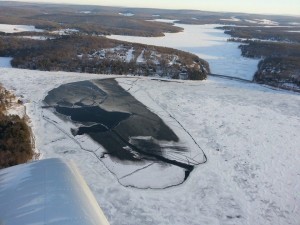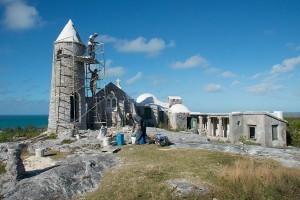Lisa Niver's Blog: We Said Go Travel, page 388
May 16, 2014
Budapest in Spring
I’ve had the chance to visit Budapest during summer, winter and spring. I have yet to make it there during autumn (so that’s something I want to do in the following years). The shoulder season – spring and autumn – is the best choice to visit any European city.
Here are some reasons for that:
the weather is just perfect: not cold anymore but not hot yet
spending time outdoors means you get a chance to see the nature come back to life
there aren’t so many tourists yet
some attractions can still be visited for free
the prices are lower than during summer
Advice: unless you want to celebrate Easter somewhere else than home, it’s better to avoid traveling during that weekend (in 2014, Easter falls on April 20) in order to avoid higher prices and crowds.
Things to do
Take a DIY walking tour of the city
I always like to choose accommodation either in the Vaci utca area or within walking distance of a metro/ bus station. All walking tours that I personally do start on Vaci utca (as you can exit the metro at Deak ter stop). From here, make your way to the Danube Embankment and stop for a photo with the Princess (Sissi). Walk towards Chain Bridge, cross it and then walk to Castle Hill.
You can easily spend an hour or two just checking out Castle Hill with is Fishermen Bastion, Mattiash Church and amazing views of the Danube. Then either make your way to the Citadella – for another walk uphill and amazing views – or towards Margitsziget , walking past the Parliament on the way back to Vaci utca. Although Gellert Hill and Citadella can be easily done on another day.
Another awesome walk is along Andrassy ut, all the way to Heroes Square, Vajdahunyad Castle and City Park.
Needless to say, very good walking shoes, a map and a water bottle are a must.
Elisabeth Tower – the highest vantage point in Budapest
Once I discovered this place – thanks to my husband – it soon became my favorite place in Budapest. Technically still within the city limits, the tower stands on the hills surrounding the city and can be reached by using a combination of public transportation options including the cogwheel.
Children’s Railway
The scenic ride is worth a day of your vacation. Since you can use it to get to Elisabeth Tower, you can combine these two into a perfect day on the hills. If you want to start early, you can even toss in some hiking in the mix.
The Railway starts from Széchenyi-hegy, where the cogwheel stops (you have to walk uphill a bit between the two stations). Take the train to Janos hegy and then follow the sign to walk in the woods until you’ll easily spot Elisabeth Tower.
If you get a day ticket on the Railway, you can take it all the way to the last station, and then on the way back stop at Janos hegy and then follow your steps back to the cogwheel station.
The Great Market Hall
Easily reached from Vaci utca (it literally stands at the end of it) , the market is where you can grab souvenirs – such as yummy paprika – and also enjoy some amazing sweets Hungary is known for. Of course, you can find plenty other things to eat so try not to come on an empty stomach or you’d be tempted to buy everything.
All photos by Traveling Cricket and may not be used without permission.
The post Budapest in Spring appeared first on We Said Go Travel.
May 15, 2014
A Bhutanese Awakening
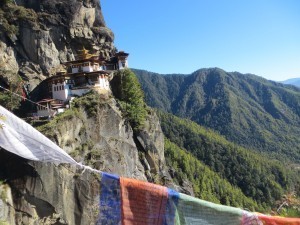 Fluttering like the wings of the majestic dragon upon it, the fiery tones of the Bhutanese flag projects against the crispy clear blue November sky. In its wavy shadow a male dressed in the traditional Gho retouches the intricately painted wall tapestries at the entrance of the grand Tashichho dzong monastery in medieval metropolis of Thimphu. With every brush stroke he refines the richness in heritage that is embedded into the Bhutanese way of life.
Fluttering like the wings of the majestic dragon upon it, the fiery tones of the Bhutanese flag projects against the crispy clear blue November sky. In its wavy shadow a male dressed in the traditional Gho retouches the intricately painted wall tapestries at the entrance of the grand Tashichho dzong monastery in medieval metropolis of Thimphu. With every brush stroke he refines the richness in heritage that is embedded into the Bhutanese way of life.
Veiled by its lofty Himalayan coating, Bhutan revels in a mystic haze of timelessness. Where a fervour for religion and culture continues to fuse effortlessly with livelihoods. To learn to value one’s own time is to discover a world where time has stood still.
I gently sip the warming welcome drink, Ara, a fermented rice liquor with pieces of scrambled egg floating inside. It is warming, unfamiliar and energising all at once, like the last Himalayan kingdom before me.
A large golden Buddha statue peers over the mountainside through the lines of prayer flags, protecting the capital Thimphu below. The grid-like street pattern gives way to a Chorten, a large hemispherical structure containing Buddhist relics, with its encircling worshippers, rotating prayer wheels and burning embers. Its the only capital in the world without traffic lights, shunned by the Bhutanese for being too impersonal, instead wardens guide the traffic whilst standing in street central pagoda-like structures.
Through the windows of the capital’s gothic buildings at night, the transient glow of adverts upon television sets is almost non-existent. Young minds are not lost to chasing trends. Their pace of life, and appreciation of the present, derives from trending in Bhutanese values. Below a picture of their king, students in Thimpu’s Arts school redden their faces with an adept focus. They carve, weave and paint like established artists, each motion entrenching their culture and morals into every fibre of their being; into the lavish Ghos and Kiras that Bhutanese men and women wear every day, and into the majestic architecture of its Chortens and Dzongs.
Gross National Happiness, the hallmark of the Bhutanese way, eschews the complexities wrought by the metamorphosis of time, and offers an affinity with land and nature, which runs unabated in its people’s blood.
A melodic ebb and flow animates the vast rice plains of the Punakha valley with the rhythm of its farmers. Echoes of laughter erupt sporadically through the agricultural milieu as the residents of Ritsha village begin their day under the heat of the Himalayan sun. Behind me a herd of school children with oversized rucksacks giggle at the line of symbolic phalluses painted upon homes en route to the Chime Lhakang fertility temple. Their homes appear precarious, built from compacted mud and stone but the smiles on their faces are unwavering. I follow the Mo chu and Po chu glacial blue rivers like a royal pathway to the Punakha dzong. Its grand courtyards reverberate with the hum of Buddhist verses, and its inner temples glow with lavish decor, adorned with golden Buddhas.
Where a tigress is believed to have transported Guru Rinpoche, the second Buddha, to Bhutan, the white washed walls of the Tiger’s Nest Monastery now stands imperiously, clutching to the mountainside. Below, the lush greens of Bhutan’s preserved landscape causes the regal structure to emanate. It is the same earthy richness that highlights the drying red chillies emerging on roof-tops, and velvet red of a trio of adolescent monks chasing each other through the courtyards of the Gangtey monastery in the Phobijkha valley.
In the snappy cold at the base of the valley wilderness, the warmth of my homestay coats me. Above the wood burning stove, or bukhari, a large cauldron of bubbling water heats my western face, flushing it with realisation. As the speed of our lives increases, there is less time to savour the moments and values we hold within it.
In this Himalayan abode, each image of outstanding beauty seemingly stops time; and the authenticity and simple pace of life of its people, brings me back into the present.
About the Author: Tej Parikh is a freelance writer specialising in travel and international development. His travels have taken him to the Middle East, Colombia and the Himalayas, amongst others, and have been inspired by his passion for ‘off the beaten track’ travel, and learning about different cultures. Blog:
Thank you for reading and commenting. Please enter our next Travel Writing competition and tell your story.
The post A Bhutanese Awakening appeared first on We Said Go Travel.
One Shade of Grey in the USA
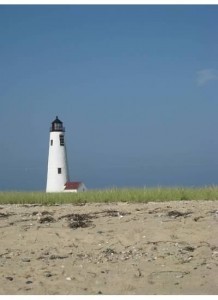 If the last step is catching the ferry on time, the first step is planning the trip with an eye toward building abundant time cushions into each leg. At approximately dawn, with a long drive looming and a rigid ferry schedule, the car is packed with people, pets, necessities, various sundries, and some doubt. Is this trip really worth the hassle? How many more accessible destinations were passed over?
If the last step is catching the ferry on time, the first step is planning the trip with an eye toward building abundant time cushions into each leg. At approximately dawn, with a long drive looming and a rigid ferry schedule, the car is packed with people, pets, necessities, various sundries, and some doubt. Is this trip really worth the hassle? How many more accessible destinations were passed over?
She is a very proud island, confident in the appeal of her natural beauty and fully embracing her age. Widely known by the apt moniker “The Grey Lady”, Nantucket is famed for both the pesky low lying fog and its multitude of gray houses, their hue likely acquired thanks to the sea air perpetually tossing salt water mist. For either or both of these reasons, the ferry that shepherds throngs of day tourists, vacationers, and summer residents all season long shares the name.
There is a simplicity to Nantucket if you are fortunate enough not to be a part of her storied social scene. Supremely peaceful, where the humid evening air lies low and amplifies the horse hooves down the street, where the beach at dusk beckons not for its warmth, but for its grand scale and awesome power, where history is positively exploited. It is impossible to sit on a bench by Children’s Beach and not give due consideration to those who have travelled the same landscape.
The numerous widow’s walks throughout the old port tell of a time when people lived with perpetual uncertainty, living and dying by the harsh and punishing whims of the sea. Today this way of life is a relic of the past but the lovers of history and tradition have made sure it is not forgotten.
It is an island that takes itself very seriously, however resort oriented it may have become. It honors its storied history, of the whaling and maritime varieties. It demands architectural and aesthetic consistency of its homeowners, such that renovations are closely monitored by a commission tasked with lighting, fencing, and color compliance. Most homes are named, rarely straying from the painted wood and chiseled gold signs, proclaiming, “Our Peace of the Rock” or “Windswept”. For all the dictates surrounding walls, mailboxes, and the like, it is surprisingly not a place of complete uniformity.
Regardless of from where one comes and how far one has traveled, it is impossible not to be awed by the opulence and the competing duality: of perfectly manicured, exquisitely landscaped lawns framing grand home after grand home, and yet each one almost guaranteed to be unique, if for no other reason than to afford silent bragging rights to the titan who owns such a breathtaking summer residence.
It has the distinction of being one of only a few islands that is as beautiful in the rain and dense fog as it is in the great equalizing sunshine. To every visitor’s benefit, nature has seen fit to bestow a nearly flawless environment in which to enjoy free time. The dozen beaches around the island are all distinctly different, known either for their sunsets, sunrises, gentle waves, lack of accessibility, or unforgiving winds. Spend an afternoon at any of them, and the views are both classic – lighthouses still stoic and determined, catamarans gliding with ease, gulls plunging into waves – and singularly brilliant. No two days on the island ever feel the same.
Nantucket’s roses enthusiastically grow, with wild bushes flourishing in equal number to sculpted privacy hedges. This is a small triangle of land where excess is ordinary, and where one is acutely aware of what a privilege it is to be on this most divinely beautiful island. Despite the harbor full of private yachts, the near constant arrival and departure of ferries, and the busy small mid island airport famed for its private jets and chartered flights, there is a feeling of seclusion.
How else to explain the peaceful state that settles upon one’s soul as soon as the Grey Lady docks. There is the temporary chaos of arrival – families clamoring to see loved ones waiting on the wharf, the island’s traditional wood paneled Jeeps pursuing coveted parking, and suitcases, totes, and golden retrievers pushed, pulled, and tugged over the cobblestones. But there is a pervasive sense of tradition here, coupled with the knowledge that the enchantment of the island awaits with each return.
To leave Nantucket is to feel as though the world in which you have lived is both immeasurably large and at once comfortably small. It is the marvelous dichotomy that is Nantucket. No soul leaves thinking it is the last time they will experience her; each departure is coupled with thoughts, sometimes knowing, always wishful, of their next return.
About the Author: Elizabeth O’Connell lives in Connecticut with her husband, three young children, and loyal Shih Tzu. A graduate of Cornell University, she is a mother first and a writer when time allows.
Thank you for reading and commenting. Please enter our next Travel Writing competition and tell your story.
The post One Shade of Grey in the USA appeared first on We Said Go Travel.
May 14, 2014
Homeward Bound: My trip to China
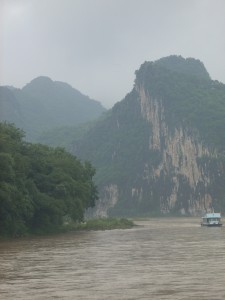 Racing the green light, a massive group of cyclists rode by on a busy China street. I stopped and listened to the people; time became slow as I tried to take a mental picture. Blink. The light turned green as my father, sister, I, and twenty or more people hurried across the street. That is what the trip to China was for me, the amazing food, the beautiful culture, and the colorful people. Then the two weeks seemed to vanish in thin air as we boarded the airplane home.
Racing the green light, a massive group of cyclists rode by on a busy China street. I stopped and listened to the people; time became slow as I tried to take a mental picture. Blink. The light turned green as my father, sister, I, and twenty or more people hurried across the street. That is what the trip to China was for me, the amazing food, the beautiful culture, and the colorful people. Then the two weeks seemed to vanish in thin air as we boarded the airplane home.
I am adopted from a Chinese orphanage and in the June of 2010, I learned that my family would be traveling to China for a heritage tour. This huge opportunity would allow me to not only see the world, but to discover what I had missed for 17 years. We toured several fantastic Chinese cities together: Beijing, Guilin, Chongqing, and many others. I was so eager that I was always the first to try new foods, wander off to take a photo, or to get a lesson from women leading a fan dance class in the park.
One of the things that truly defined China was the various types of food. Heaps of dumplings, soups, and noodles made my mouth water as I tried every food they offered. The most memorable food I had was my first meal in Beijing at our hotel; I had a simple noodle soup, and maybe it was the jet lag, but that was most astounding soup I had ever tasted. Everything in the cities was within walking distance, and the sun beat down on us throughout our tour; occasionally the tour guide would stop for all the kids in my heritage group to buy peach ice cream. Each time made me smile as I took a bite knowing that it would be a long time again before I would eat traditional Chinese food again.
Vendors, travelers, tour guides, and the general population brought a personality to China as a whole. The people we met in restaurants or in the towns were always polite and inviting. We had several tour guides but our favorite was Xi Xi; she was funny, informative, and knew the best restaurants everywhere we went. The vendors were the most amusing people to talk to and one of the highlights of my trip was watching my determined little sister, Isabelle, bargain with the vendors on the price of a purse. Other people within our heritage group also had stories to tell of their choices of adoption; it was heartwarming to hear someone else’s discovery that adopting a child was one of the greatest decisions ever made.
Everyone wants to see the Great Wall of China as one of their activities, but I think the Temple of Heaven in Beijing had so much more to offer. While the view from the top is gorgeous and the history is intriguing, I found less appeal when we walked on it. In the Temple of Heaven there was a large group of people doing Tai Chi, there was a man on the sidewalk practicing his calligraphy, and so many other people interacting that it would have been a wonderful place to relax and watch the world go by. Other activities included on the trip were holding an adorable baby panda, playing hacky-sack in Tiananmen Square, shopping in the Pearl market, but I think the Temple of Heaven showed the personal side of China.
I stood looking over the Li River as the mountains of Guilin passed by in fog, and I came to the realization that I would never be tired of exploring my home country. I will always be searching and trying to immerse myself in the culture that seems foreign to me now. I would try to reconnect myself with the world I left behind as a baby with the hope that maybe one day I could return once again.
About the Author: I am currently a high school senior and anticipate to major in International Studies. I love reading and learning about other cultures. This summer I am planning to travel to France and Spain with my school.
Thank you for reading and commenting. Please enter our next Travel Writing competition and tell your story.
The post Homeward Bound: My trip to China appeared first on We Said Go Travel.
Beg For Happiness in Spain
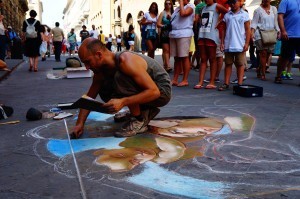 BEG FOR HAPPINESS
BEG FOR HAPPINESS
Some thoughts in Spain.
I walked past a little old Spanish man with white fluffy hair on his head, his back a little stooped, as he was holding a little black leather money wallet open. It was so discreet, that I didn’t even realise at first that he was begging. He was gently rocking back and forth with a look of desperation on his face, but he was obviously trying so hard to maintain his dignity.
I almost let out a sob. He looked exactly like my dad.
I couldn’t imagine living in a world where my family were reduced to beg on the streets, because they simply couldn’t make enough money to feed themselves. I thought about this little old man. And if he was anything like my old man, he was not begging for himself. He was begging for his children, or most likely his grandchildren.
It was the last straw for me. I have seen far too many people on the streets around Europe. But in particular, Spain. Spain’s economy is just hopeless at the moment. A place with so much beauty, culture, passion and sights, and yet there are too many people living in poverty, because they can’t earn enough.
In Spain, youth unemployment is at 56%. Their economy is almost entirely dependent on tourism. And right now, I am in the major cities. Barcelona and Madrid at least have opportunity; remote country towns have little to no hope.
We are incredibly lucky and spoiled in Australia. When we complain that our service is not fast enough, our wifi is not strong enough, our handbag is not pretty enough, or our car is not powerful enough, we are just displaying spoiled capitalist attitudes that reinforce unforgivable discrepancies in society. We are basically saying aloud, “I like being middle class and owning a lot more than all you suckers out there who can’t afford to eat.” It has literally made me sick. As I’ve walked past these people on the streets, I’ve been wondering what to do. What is the best approach with such a number of beggars? Do I give money to every one of them? Am I rich enough to be giving one euro to all 25 – 30 beggars I see each day? Am I stupid to be giving to them? Because the attitude back home is that we shouldn’t give money to those “drugged up scum rats who aren’t doing a damn thing to help themselves.”
In some places, we see poor people being creative with their money-making. This has seriously inspired me. I have seen artists do amazing things with chalk, pottery and spraypaint. Groups of boys have learnt to dance in unison and have put on some extraordinary shows that have made me think now that is talent! I have been totally in awe of some of the skills and gifts that have been put on display, if only to gain a little bit of cash. It also brings such life and happiness to a city.
It also sparked a thought in me – if I ever ran out of money travelling, I could potentially make some clever money!
I guess the sad part of all of this, is that there are some people who have been so beaten down by life, so depressed, that they can’t offer any talents, except a hand to the crowds. Some are so beaten that they can’t even lift their hands anymore.
The power of chronic depression is something that had always bothered me – the number one human affliction – and I’ve always wanted to find a solution. And it’s not a problem unique to those living in dire conditions.
How do we bring more happiness in people’s lives? How do we break the cycle?
I suppose if I was going to try to make a difference in the world, I would want to bring happiness and hope – internally – to people in need. Money doesn’t bring happiness. It is handy – but what we need to change are our attitudes.
If only it was so easy for all these people whose every dream has been shattered through poverty, loss and desperation.
When I look outside my perfect little cafe as I sip on my soy iced coffee and listen to one of my thousands of purchased songs on my iPhone with my $90 Sennheiser headphones in my ears as I tap away on my iPad, I see a woman on the other side of the street with her hands outstretched to the crowd. I wonder if she did great things in her life. I wonder what her story is. I wish I could speak Spanish.
Whenever I give money to someone in need, I never throw it at them and walk away in an uncomfortable hurry. I always give them a lingering, knowing, heartwarming smile, looking directly into their eyes. Their smile in return is the most beautiful thing in the world.
I’m not afraid to waste my breath on happiness.
About the Author: Rose Mascaro has a Bachelor in Creative Writing and Literature, and has been an English Teacher for 10 years. Last year she travelled the world on a trip of a lifetime, and now wants to commit her time to writing about the greater issues that are hidden from mainstream society. As she teaches her high-school students: Language = Power.
Thank you for reading and commenting. Please enter our next Travel Writing competition and tell your story.
The post Beg For Happiness in Spain appeared first on We Said Go Travel.
How Yosemite, California Stole My Heart
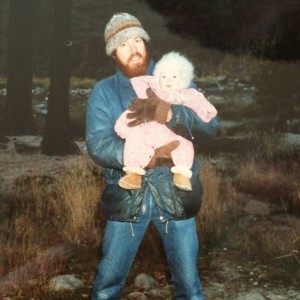 There are some places you go that will always hold a special place in your heart. I’ve traveled to many countries and seen incredible sights – the Coliseum in Rome, the Astronomical Clock in Prague, the stunning vistas of New Zealand – but they lack the emotional draw of one place – Yosemite National Park.
There are some places you go that will always hold a special place in your heart. I’ve traveled to many countries and seen incredible sights – the Coliseum in Rome, the Astronomical Clock in Prague, the stunning vistas of New Zealand – but they lack the emotional draw of one place – Yosemite National Park.
I’ve been going to Yosemite since I was a small child, my parents bundling me into backpacks before I could walk and hiking up trails into the backcountry. A photo from my first year of life shows my dad proudly holding me amongst pine trees, the distinctive Merced river flowing along behind him. When I got older and could walk longer distances, I’d be bribed into going on day hikes with promises of dried fruit and chocolate. Sometimes my mom would have to lure me up the trail with a bag of trail mix in her hand.
One of the first things I learned in Yosemite was how to sit still and observe the natural world around me. After scaring my first deer half to death by shouting “DAD! A DEER, I MEAN A DOE!!”, I learned to be quiet. I would sit amongst the pine trees in the still morning air and wait, my mug of hot chocolate steaming as I scanned the clearings for deer, squirrels and the rare coyote or bear. When I got tired of being quiet, I’d don a pink helmet and test my newfound bike-riding skills on the paths around the campground.
Beginning the year I turned seven, my family began to host exchange students from Iceland, Germany and the Czech Republic. Each year we’d load up the car and introduce another European girl to the glorious heat of a Yosemite summer. Some of them fared better than others. Our Icelandic exchange student, used to long winters and cool summers, wilted like a flower in the 90+ degree heat. Me, I loved it. In my mind, there was nothing better than spending the day building rock piles by the river and dunking in the glacial water to rinse off the sand and sweat. Nights brought campfires and s’mores and stargazing in the meadows with our newfound friends from the next campsite over. It was the perfect place to be a child, and the perfect place to find yourself as you grew into an adult.
The last time I went to Yosemite I was in high school. I brought a friend along and we spent our afternoons in the tent, listening to Radiohead and Green Day, sharing headphones and bags of chips. We went on long hikes and I introduced her to the magic of Yosemite Valley – Half Dome with its distinctive sheer face, El Capitan with a scattering of determined rock climbers clinging to its sides, the ethereal beauty of the Mist Trail, where you climb through rainbows to reach the top of Nevada Falls. We lay on wooden walkways in the meadows at night, staring up at the stars above us in wonder. We reveled in the beauty of nature, so raw and so changeable.
Time moves differently when you are camping. Away from the noise and highly structured tasks of daily life, you are left with a lot of alone time. There are few things more enjoyable than getting up early and watching the sun slant down through the pine trees as the world around you wakes up. The air is fresher, cleaner. With weak cell service and internet, you are forced to interact with those around you as your truest self. There is no barrier between you and the world. You are fully present in a way that daily life in the city rarely offers. There are no regrets to be had here – what would they be? No one ever regretted a swim, or a beautiful hike, or a starry night lit only by the glow of a campfire. No one ever regrets Yosemite.
About the Author: Ravina Schneider is a snarky brunette living in Berkeley, California. She does not attend Cal but she likes to run through the campus sometimes. She enjoys cooking, reading, hiking and traveling the world.
Thank you for reading and commenting. Please enter our next Travel Writing competition and tell your story.
The post How Yosemite, California Stole My Heart appeared first on We Said Go Travel.
May 13, 2014
To the Lake in Maryland
 The lake. The words are simple yet promise escape and wonderment. In the western edge of Maryland, among former farms, sits Deep Creek Lake, and along its shore is my favorite spot on Earth. “Something there isn’t that doesn’t love a wall,” Robert Frost once wrote about nature creating upheaval against rocks stacked upon its shoulders. I could not imagine a force so great as to disrupt a lake, whether manmade or not.
The lake. The words are simple yet promise escape and wonderment. In the western edge of Maryland, among former farms, sits Deep Creek Lake, and along its shore is my favorite spot on Earth. “Something there isn’t that doesn’t love a wall,” Robert Frost once wrote about nature creating upheaval against rocks stacked upon its shoulders. I could not imagine a force so great as to disrupt a lake, whether manmade or not.
Hurricanes ravage the sea and change its slope, its shoreline, its very appearance only to return to stasis once fury subsides. Torrential rains spill rivers over their banks, the muddying flow surges, rattles and scars nearly everything in its path, only to crest, retreat and be absorbed. The tsunami – forget it, such wrath is indescribable. But somehow a lake holds greater dignity no matter how much water deluges upon it. Somewhere I am sure there are damns and floodgates that withstand the forces of nature which a lake harnesses, but my position and posture are of distance, removed to safe haven. Deep Creek holds all that I want in life – serenity, purpose, fulfillment. It is where I realized I had reached my goal of being a good parent. Kids splashed safely nearby in the still, shallow waters, unthreatened. I had come so far from my own fatherless childhood.
The dock swings and dances upon artificial waves – wakes from boats eclipsing some registered speed limit as if rules mean nothing. The bounce beats a rhythm unlike any salsa I could balance, unlike any mambo I could step. The pier is my skateboard, my waverider, a teeter-totter of surrender as I give into the waves, ride out their momentum, saunter. But these are only in my memory. The undulating rise and fall against gravity are remnants of last summer’s get-away to pure-air elevations of escape. The atmosphere is thin and cool, yet the sun is a mentor of patient guidance. Just wait! The heat will surface and the lake will absorb and the day will stretch on timelessly.
It has been promised to my kids that one of these years we will go to The DCL during the depths of winter just to look at the lake, to maybe skate if safety allows, and to finally feel summer in January. For memory pulls me toward the water as if a time machine were my transport. At home, in Pittsburgh, under a sharp, deep February chill, I think of the lake, of The Lake, of a place that beckons me and promises unabashed security.
No matter the season, I sense the water as it eluviates before me, a folding-fan’s open but creased flatness stretching deep to the west, my left, and reaching up and high to my right, the east. My secret favorite spot is shaped in the smiling rind of mauled-over watermelon, and its breadth is as broad as fields of Iowa corn rolling onto the horizon. Watching The Lake, my lake, must be what it means to stand at the farm and peer over the giant, heavenward stalks.
I stand on the shore, firmer, less ebullient than the dock, and cast a line or dip a toe into water that feels less like water and more like cool slips of syrup. The thickness isn’t slime, or muck, or year-upon-year of algae; rather it is a oneness with lake I have felt nowhere else. It is a cradle calling me home. I wish to die there.
About the Author: I am Dan Kirk, from Pittsburgh. I have been writing for over 25 years and finally decided in my 40s to get my MFA in Creative Writing. I earned that in 2013 from Chatham University. I mainly write fiction but enjoy creative non-fiction as well.
Thank you for reading and commenting. Please enter our next Travel Writing competition and tell your story.
The post To the Lake in Maryland appeared first on We Said Go Travel.
Trail to the universe in Namibia
 Trail to the universe
Trail to the universe
Leunis van Rooyen
You are on the seventh day of the hiking trail through Namibia’s Naukluft Park. It’s a place of rugged beauty—a rocky énclave on the edge of the Namib Desert. Because of its cliffs and deep ravines it provides refuge for a greater variety of plant and animal life than one would expect in such a harsh environment. Yesterday we saw a sycamore fig growing high up against a cliff, its roots descending for more than 100 meters along a crevice to find sustenance. Life here is not easy.
Today begins with an easy walk along a dry riverbed fringed with acacia thorn. We spot spoor in the sand. It is not that of an antelope. We do not pursue the issue because our minds are focused on what is awaiting us not too far off: the unknown factor of a chain ladder with a drop of about 10 meters that you have to scale to continue to your destination, the shelter on the Snow Flats.
A chain ladder? This is somewhat of an overstatement. You find yourself at the foot of a cliff that in the rare rainy times becomes a waterfall. The hard rock has been worn silky smooth by the waters of millennia. A chain has been bolted in place at the top and the bottom of the waterfall. You must haul yourself up with your arms.
On reaching the top, the landscape changes completely. There are no trees or shrubs, only scattered, stunted grasses. Underfoot there is change too: the trail leads up a long incline and it is totally covered in fist-sized and smaller stones and pebbles. They are all more or less rounded and smooth and come in an array of muted colors ranging from cream and ochre, to russet, black, brown and all hues in between. They are awkward to walk on, but you cannot tear your eyes from them: this is a natural rock garden with a unique beauty all its own.
The trail crests the incline and you cannot imagine where it is leading to for there is nothing else to be seen. Gradually the outlines of what appears to be a shrub define itself on the horizon, right in the middle of the plateau. The shrub turns out to be a tree, a hardy rhus. The prevailing desert winds have made it grow flat, sideways. You round it and then comes the surprising find that your overnight shelter is under the low canopy of this tree. Welcoming the shade, you offload your pack and settle down to light up your stove and to have a snack.
Having rested, you stroll about on the plateau and discover that you have an uninterrupted view of 360 degrees of the skyline. It is magnificent. You walk to various points of the compass, in complete awe of the surrounds. You squat on your haunches and cannot resist selecting a number of stones to place in your backpack to take home as a reminder. Look at this beauty! And that one! It is as though in primeval times an artist had carelessly lost his palette here. Then these stones must have formed a solid crust of rock on the plateau’s top. What forces of nature had had to be in play here to have caused change on such a massive scale?
There comes a point when the late afternoon sky becomes a transparent gold and then slowly transcends into darkness but even though it is new moon a myriad stars are blinking brightly at you. Through the clear desert sky they appear to be close at hand, only a stone’s throw away, it would seem. Up here on the plateau their light is so bright that you can see quite well for some distance. It is pure and utter magic.
Far off you hear the cry of a jackal but then complete and utter silence descends onto the tableau once more as it has done for many centuries.
As you settle in for the night the quiet is rent by the sound of thundering hooves just outside your line of vision. You can only guess at the type of animal rushing past: Hartmann’s mountain zebra? Kudu? Did a whiff of your scent spark their flight? Or is there an animal of prey about?
Before you nod off the thought dawns on you: The heavens are presenting me with a dome through which I literally can look into infinity, back into time. The day’s trail seemed to have been a shortcut to the universe—and well worth the time spent.
The next morning, about 800 meters from the overnight shelter, you come across the carcass of a zebra killed during the night.
A leopard’s kill, no doubt.
About the Author: Leunis van Rooyen is a language practitioner with a keen interest in hiking, birding and adventure traveling.
Thank you for reading and commenting. Please enter our next Travel Writing competition and tell your story.
The post Trail to the universe in Namibia appeared first on We Said Go Travel.
May 12, 2014
Bahamas: The Via Dolorosa of Father Jerome
The Via Dolorosa of Father Jerome
We are travelers. Driven by a need like an unquenchable thirst to find out what lies beyond the horizon, we don’t spend much time in one place: we sail farther. Yet, sometimes we pause. Sometimes we climb a ridge and look from the top of a mountain to see where we have come from and where we are going.
The distance between Little San Salvador and Cat Island is 34 nautical miles. We sail all day. It’s dark when we drop anchor on the west side of the island.
The next day we take to the hills. As we climb the 206-foot Mount Alvernia on Cat Island, the highest land elevation in the Bahamas, I tell this story to my children:
Once upon a time there was an old hermit, a most unusual man, who lived alone in a stone home he built atop a hill. You might imagine that he was a very small man, maybe a midget, for his house, which still crowns the hill, is so tiny. Everything in it: his sleeping quarters furnished with nothing but a simple bed, the cloister with only three miniature columns leading to a guestroom where no more than one or two guests could fit, the little bell tower, and the chapel with its single pew where one must bend in order to fit through the door, resemble a child-size castle on top of a tiny mountain. But you know what? The resident of this place was in fact a very tall person, slender, with white beard and sad eyes. Why do you suppose he built for himself such a small dwelling?
It is a short but steep trek to the peak of Mount Alvernia. Visitors from all over the world come here to climb the Everest of the Bahamas, and as a pilgrimage to Father Jerome’s Hermitage which he designed and built singlehandedly on top of the hill.
Born John Cyril Hawes in 1876 in England, he studied architecture and theology. At age 21 he was already a practicing building designer. At age 27 he became a priest. In 1909 John Hawes joined a mission in the Bahamas to restore churches damaged by a great hurricane. After that, the architect-priest left the Bahamas and didn’t return until 1939. He came back to Cat Island to spend the last 17 years of his life in solitude, as a poor old man dedicated to seeking God through prayer, charity, and seclusion from society. Everyone called him Father Jerome.
We reach the summit. The view from the top is spectacular. We see the entire Cat Island below: a scrubby mass of tropical vegetation, small colorful houses strewn along the west coast. And beyond, the placid emerald-green waters of the Caribbean sea to the west and the roaring Atlantic to the east stretching all the way to Africa. Up here the wind carries the muffled prayers of an old hermit. Up here, inside the one-man monastery we, atheists, feel the presence of father Jerome: a sudden nostalgic sensation of profound spirituality and awe.
The grey stone walls constructed over the hill in perfect harmony with the natural surroundings, and the white cupolas bright against the blue sky are perfect as a renaissance painting. Except for the cone-shaped dome of the belltower which is broken and crooked.
“What happened?” I ask a man mixing cement on the grass in front of the hermitage. Another man is working up on the belltower.
“There is a metal bell inside, so a lightning come and BAM, strike it! About a month ago. Worst damage ever since the hermitage was built”, he explains.
Cedric Wilson, a building contractor, and Kirk Burrows, both Cat Islanders, are commissioned to repair the damaged belltower. We offer to help and they gladly accept.
We begin working the next day.
Every morning for a week we go to the foot of Mount Alvernia where we find construction materials waiting for us to be hauled up. As we walk the steep rocky path carrying buckets of sand and wooden planks I am thinking of Father Jerome walking the same path, building the hermitage stone by stone.
There, along the shadowy path to the top of the hill, he has placed concrete bas-reliefs imaging Jesus carrying his cross on the way to his crucifixion along the Via Dolorosa: the Way of Suffering. The analogy is inevitable: Jesus struggling with the cross, Father Jerome building the hermitage, Cedric and Kirk fixing it, and now us too being part of it.
At the end, I am grateful that through our efforts to help repair the belltower we became forever connected to Father Jerome and his Hermitage, to the past and the present of Mount Alvernia, to the people of Cat Island, and to the history of the Bahamas.
About the Author: Mira Nencheva is a writer, photographer, and a nomad with Bulgarian origins. With her husband and two children she is on a journey around the globe aboard the 38 feet catamaran Fata Morgana, exploring natural and cultural sites of interest, living off grid, volunteering, and making art for social change. Follow their journey on Facebook.
Thank you for reading and commenting. Please enter our next Travel Writing competition and tell your story.
The post Bahamas: The Via Dolorosa of Father Jerome appeared first on We Said Go Travel.
One night in Kauai: All Coffee, No Plans
 I had less than 48 hours. At 3am I was off work and on an airport shuttle by four. I lived on Oahu and was meeting a friend on Kauai. She had two weeks off and, a few days in, had decided that the beauty of the Garden Isle was meant to be shared. I had never been before. “If I spot your plane ticket, can you come meet me?” A quick switch of shifts put me on a 5:15am plane out to Lihue with one full overnight on the island, then back to HNL at 11:30pm. I boarded my shuttle through the same door but with a different itinerary than the other passengers; Instead of leaving paradise, I was headed there.
I had less than 48 hours. At 3am I was off work and on an airport shuttle by four. I lived on Oahu and was meeting a friend on Kauai. She had two weeks off and, a few days in, had decided that the beauty of the Garden Isle was meant to be shared. I had never been before. “If I spot your plane ticket, can you come meet me?” A quick switch of shifts put me on a 5:15am plane out to Lihue with one full overnight on the island, then back to HNL at 11:30pm. I boarded my shuttle through the same door but with a different itinerary than the other passengers; Instead of leaving paradise, I was headed there.She met me at the gate and we squealed and hugged as commonly observed at airports. We climbed into a minivan with a surfboard nose resting between us. “Where to?” she asked. “Wherever!” We quickly made an essential stop for coffee. Driving down the highway we spotted barreling waves in the distance. “Those waves look sooo good! How do we get there?” We tried various side streets, but “DO NOT ENTER” signs constantly obstructed the road. In the distance the symmetrical breaks taunted us and it seemed the residents were keeping the gems for themselves. As we were deciding to give up, we saw two men packing surfboards into a parked car. We had found the treasure without a map. They directed us onto a trail to an almost-secluded beach. She went to challenge the sea while I did what I do best- nothing.
I swam around blackened reef before opening my book. I peered over the pages to watch my friend in the lineup, blond ponytail and blue surfboard. “Excuse me,” an elderly woman said. “ I fly back to Arizona tomorrow and have not stepped in the ocean because I have bad balance. Could you possibly help me? I just haven’t been in the whole time I have been here…” A reasonable request, so I held her arm and walked her into the water, cautioning her of the reef. “Oh thank you… That feels amazing. It would have been such a shame to come here and not feel the ocean.”
Next was Polihale State Park. We hesitated when the pavement turned to sand. I couldn’t remember if you drive fast or slow over sand, but the sedan ahead of us was going pretty slow… Twenty feet later we were stuck. Six willing volunteers and four floor mats got us back on solid ground. We later learned that the sedan had met the same fate. The beach was ivory white and endless between our toes as we gazed at sailboats. We stopped by a coffee farm. We stopped by another coffee farm.
We decided to camp on the other side of the island… Till we got lost. As we were scanning the map with a flashlight, a couple of local boys pulled up in a truck next to us. “You girls need help?” “Do you know where Anahola Beach Park is?” They gave us directions and we found our way in the dark. Minutes after we set up our tent the same truck came up the road. “Just checking you made it!” We waved and said thanks before debating if we should have asked them to stay for poke and beer because they were so considerate and, quite frankly, very attractive. “Too late now,” as I watched the red taillights vanish. In the morning we met our neighbors, a South African family with a collapsible sailboat.
We drank coffee at an art gallery and drove to the Kalalau trailhead before deeming it “too touristy”. We stopped by Hanelei Bay for coffee and headed to the Kamokila Hawaiian Village for the last kayak rental of the day. We paddled too far upstream, where the water was murky and smelled of cattle. “I guess we missed the grotto.” We anchored our feet in each other’s kayaks and passed a bottle of cheap champagne. Downstream, we drifted past the South Africans. We hiked to the Fern Grotto in bikinis, surrounded by visitors in bermuda shorts and commemorative T shirts. “Do you think we have enough time to hike to the waterfall?” By the time we returned our kayaks to the rental dock, dusk was setting and the Hawaiian Village was empty. Thankfully, they hadn’t locked the gate on us.
We had burgers and beer for dinner and by midnight I was back on my own island. Somehow I had lived a lifetime during those two days. When time is of the essence, coffee is of the necessity.
About the author: Melissa Rae was raised on the California coast and moved to Hawaii on a whim. Her favorite hobbies are napping and SCUBA diving. She currently resides in Central Oregon.
Thank you for reading and commenting. Please enter our next Travel Writing competition and tell your story.
The post One night in Kauai: All Coffee, No Plans appeared first on We Said Go Travel.
We Said Go Travel
We Said Go Travel is a global community of over sixteen hundred writers with articles from every continent.
Stories are shared with photos and video from a perspective of the transformative power of travel. We Said Go Travel has hosted live and online events as well as travel writing contests around the world. ...more
- Lisa Niver's profile
- 57 followers





